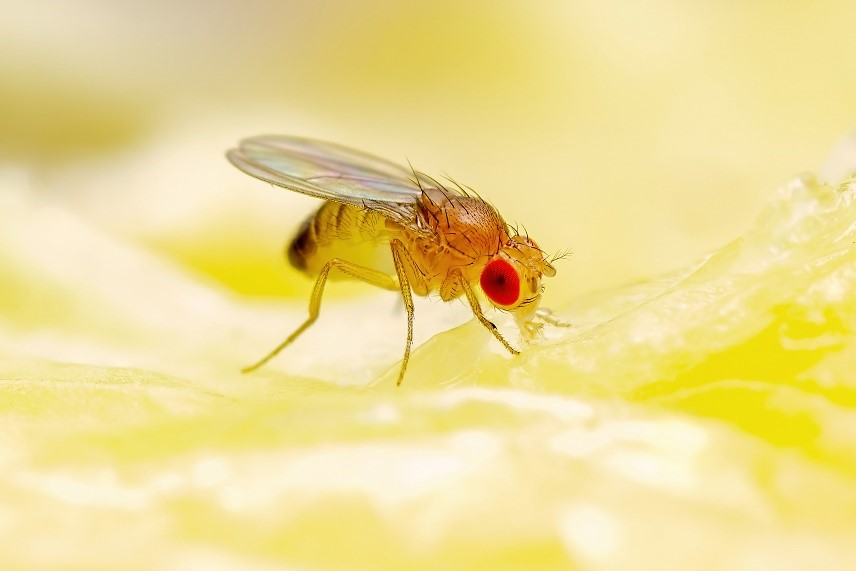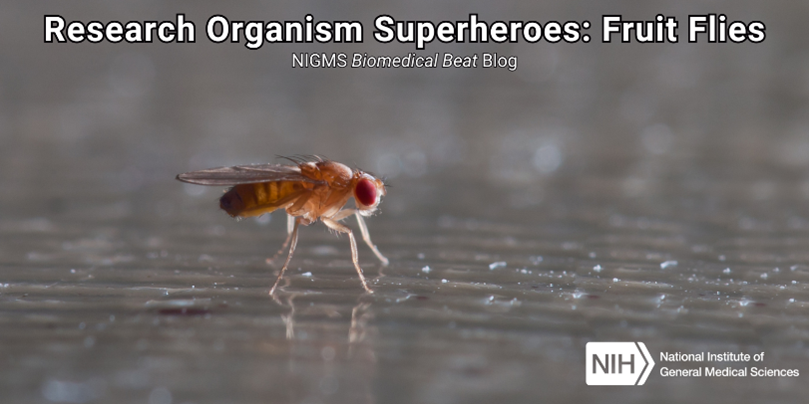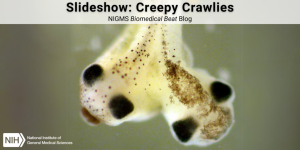
Those pesky little bugs flying around the overripe bananas in your kitchen may hold the key to understanding something new about how our bodies work. That’s right, the fruit fly (Drosophila melanogaster) is a widely used research organism in genetics because of its superpower of reproducing quickly with similar genes to people.
Researchers have been studying fruit flies for over a century for many reasons. First, they’re easy to please—just keep them at room temperature and feed them corn meal, sugar, and yeast (or those bananas on your counter!). Second, they reproduce more quickly and have shorter life cycles than larger organisms. A female can lay up to a hundred eggs in a day, and those eggs develop into mature adult flies within 10 to 12 days. A third reason is the simplicity of the fruit fly’s genome, which only has four pairs of chromosomes compared to the 23 in humans. And on a logistical note, the male and female flies are easy to tell apart (genetic studies often require separating males and females, which isn’t an easy feat in all organisms).
Scientists began using fruit flies to understand basic biological processes, like cell division and signaling pathways, as well as genetics concepts, like how traits are passed on through generations. Because of how quickly fruit flies reproduce, researchers could see many generations in a relatively short time frame. One of the founding fruit fly scientists, Thomas Hunt Morgan, was awarded the 1933 Nobel Prize in physiology or medicine for his discoveries about the role of chromosomes in heredity. What scientists didn’t know in the early days of fruit fly research was how similar fruit fly genes are to humans, especially in important areas like organ formation and disease development. In fact, most genes in humans have fly counterparts, which has made them excellent research organisms for studying human diseases like cancer, diabetes, Alzheimer’s, and many more.
NIGMS-funded scientists use fruit flies to study many aspects of biology, including how genes are turned on and off (gene expression) within cells, how changing specific genes affects their function, how fat sends signals to the brain, and much more. In fact, three NIGMS-supported researchers were awarded the 2017 Nobel Prize in physiology or medicine for their work in fruit flies uncovering some of the mechanisms involved in circadian rhythms. (Find our interview with one of them, Michael W. Young, Ph.D., in this blog post.)
The next time you see these tiny pests swarming your fruit bowl, consider taking a minute to remember the many contributions their species has made to understanding your own health. You can also tell us your favorite research organism, and we might feature it in a future post!







